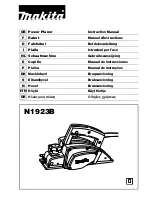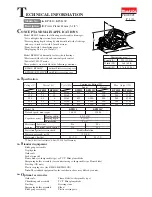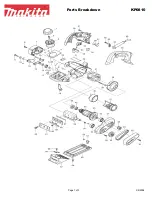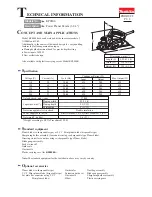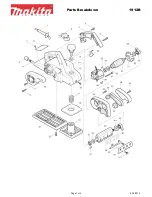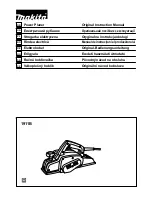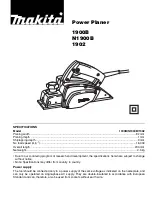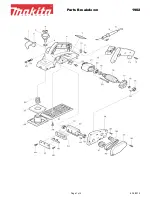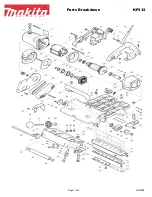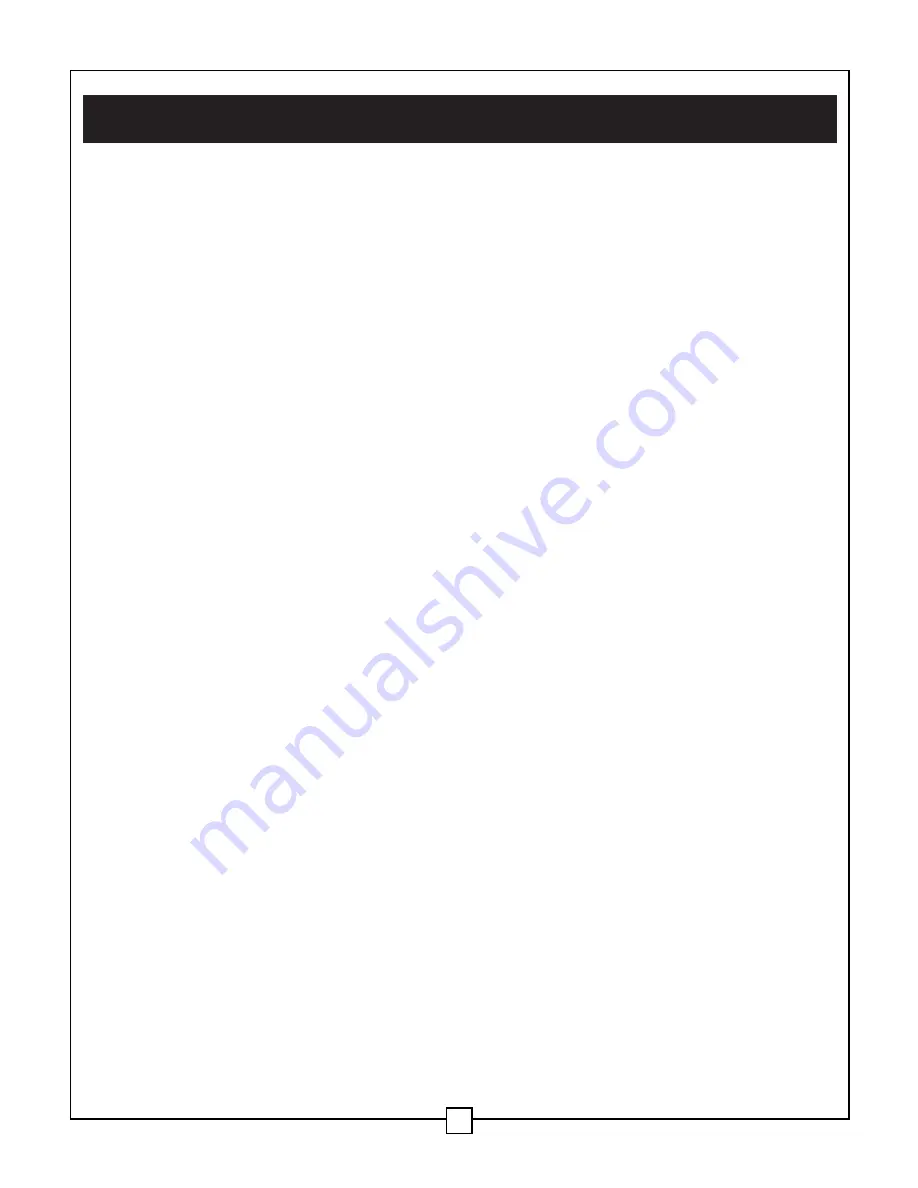
Planing operation
The thickness planer will automatically feed the workpiece into and out of the cutter head.
Do not force the planer to work faster that it is designed to work. Damage to the workpiece
and the planer can result.
Thickness planers work best if at least one side of the workpiece is flat. If both sides are
rough, the planer should be used to create one flat side. Plane the opposite side after one
side is flat and smooth.
Planing should be carried out in steps in order to achieve the final planing thickness. If the
thickness is to be reduced by 1/4" (6.4 mm), 1/8" (3.2 mm) should be removed from each
side. This will also allow the planed workpiece to dry and cure uniformly.
Measure the thickest part of the workpiece that is being planed. Make light cuts on both
sides.
Do not attempt to make a deep cut, or a cut that is deeper than 1/32" (0.8 mm). Make
several passes until the desired thickness is achieved. Light cuts create a finer finish.
Avoid snipe or depressions made by the cutter head knives at the beginning or the end of
the board, by supporting both ends evenly. Keep the board level during the entire planing
operation.
VII. Operation (continued)
16


























